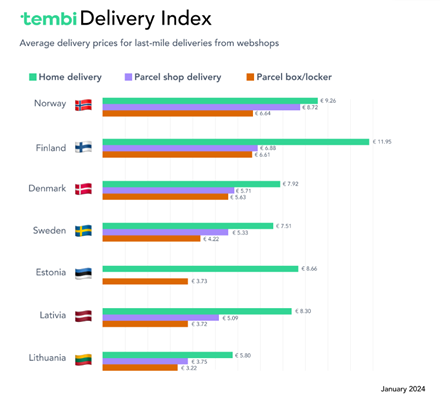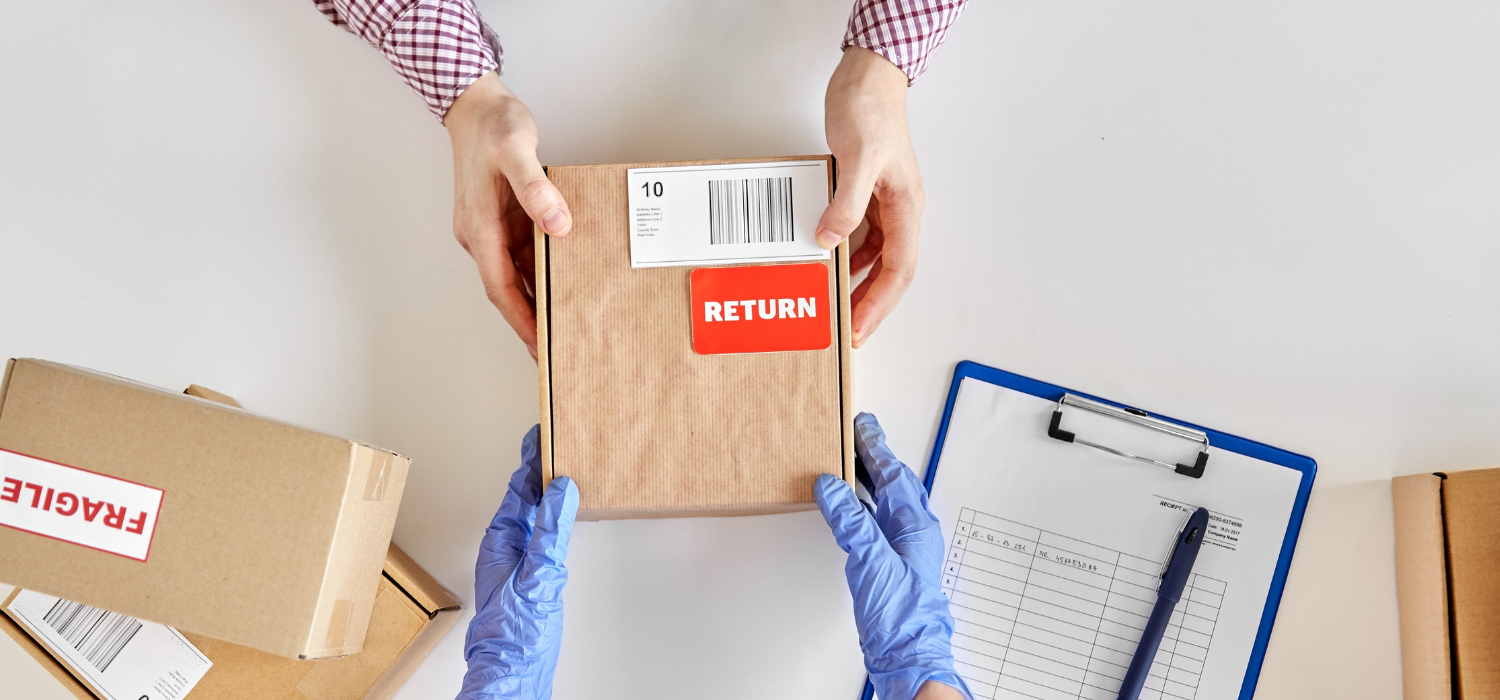Free returns, in eCommerce, are often used as a marketing lever to incentivise purchases. Yet, no shipment is ever really free. Behind every return there is a significant economic cost and environmental impact. But who really pays the bill for returns? And what are the consequences for the logistics sector and operators?
In this article, we explain in a clear and transparent manner who really pays for eCommerce returns, but above all we tell you about a practical, sustainable, and above all immediately available alternative.
Free eCommerce returns: a marketing strategy
Yes, the phrase ‘return is free’ is false. Or rather, a marketing ploy to make up for one of the main problems of eCommerce: the impossibility of trying and touching a product before buying it. So, in other words, behind the phrase ‘return is free’ is this message: ‘Take the product, try it at home, and if you don’t like it send it back for free’. Or rather, this is the message passed on to the consumer. The reality is instead this: ‘Take the product, try it at home, and if you don’t like it send it back at our expense’.
Does it change anything for the customer? Objectively no. For the customer, the important thing is not to pay the return for a product that, for whatever reason, they do not wish to keep. The issue, however, is not only that of transparency, but of what follows: being transparent about the cost of returns and especially about who actually pays that cost is worth it for consumer awareness, and thus the sustainability of the whole system.
Free shipping and returns, deliveries directly to the doorstep and other unsustainable practices have certainly contributed to the development of eCommerce, but the result has also been the proliferation of unsustainable purchasing habits and, in the business world, an unsustainable model sooner or later no longer works.
Translated: the negative consequences will also affect the customers themselves.
The illusion of free returns: who bears the real cost?
But then, who actually pays the cost of a return? When a customer returns a product purchased online, the costs are passed on to several actors in the supply chain, including:
- Online sellers (merchants) have to cover the cost of return shipping, quality control, warehouse management and loss of value of returned products. According to a study by Narvar, in 2022 the average cost for US retailers to process a return, including shipping, warehouse management and product reconditioning, was $33. But the biggest loss is in the value of the goods: about 45% of returned products are not resold at full price, and some even end up in liquidation or destroyed. For many eCommerce businesses, especially those operating on low margins, returns represent a threat to profitability. This has led many brands (such as Zara and H&M) to introduce return costs to discourage the phenomenon and limit losses.
- Couriers and logistics operators suffer from increased operational pressure and logistical complexity, with a direct impact on operating costs and environmental emissions. In fact, reverse logistics, which includes collection, sorting and reprocessing of returns, is even more costly and complex than normal delivery.
- Consumers, because even if returns are ‘free’, the final prices of products tend to increase to compensate for losses due to returns. Moreover, to reduce and discourage returns, some retailers choose to eliminate options such as deferred payment or limit multiple purchases with free returns. In other words, the level of service for customers is reduced.
Free returns: everyone pays, even the environment
Finally, we cannot fail to mention the cost to the reverse logistics environment.
According to research by Optoro, returns in the US alone generated 24 million tonnes of CO2 emissions in a single year. According to Greenpeace, in fashion returns, a returned garment can travel up to 10,000 km before being reintroduced into the market, or even disposed of – you can see here the consequences – while the transport associated with returns generates an average of 2.78 kg of CO₂ per parcel. And the fashion sector generates the most returns.
In short, exactly ‘free’ these returns are not. The final bill is presented to everyone, but really everyone.
The question that now remains is: is it enough to charge for returns? Is it enough for the customer to pay his fee to solve the problem? To answer in the affirmative would be too easy. Fee-based returns disincentivise many purchases, because customers would evaluate their purchase more carefully before placing an order. This could damage online stores and the growth of eCommerce in general.
Moreover, the environmental impact of reverse logistics would remain the same.
However, there is a solution that can significantly help to address the problem. How? By reducing the costs for returns, thus making them more acceptable to customers and more sustainable for merchants, and by reducing the environmental impact of reverse logistics.
Out-of-home deliveries: Lockers and Pick-up Points to reduce the cost of returns
The use of Lockers and Pick-up Points is a solution increasingly adopted by online stores and appreciated by consumers that allows them to keep the costs of returns low, make them more sustainable and also more efficient.
Lockers and Pick-up Points offer several advantages, including:
- Optimisation of reverse logistics: by concentrating returns at strategic points, the number of home collections is reduced and the transport of parcels is optimised.
- Reduced CO2 emissions: the consolidation of shipments at a single pick-up point reduces traffic and emissions related to returns.
- More convenience for customers: Lockers and Pick-up Points offer flexible pick-up and return times, making the handling of returns easier and faster.
- Less pressure on couriers: by avoiding fragmented pick-ups, they reduce operational complexity and reverse logistics management costs.
Added to all these points is the most important issue: that of cost, which, as we have seen, is the reason behind the marketing strategy of ‘free returns’. Thanks to Lockers and Pick-up Points, in fact, the costs of returns are significantly lowered, with clear advantages for both merchants and consumers.
According to the Tembi Delivery Index February 2025, which compares the average price of deliveries (i.e. indicatively also for a home pick-up) at Locker and Home delivery in Northern European countries (Sweden, Denmark, Finland, Lithuania, Norway, Estonia and Latvia), the price for a home delivery is EUR 8.66 in 2025. In contrast, the cost for pick-up at a Locker is, on average, EUR 5.04 in 2025. In other words, shipping and collecting online orders at Lockers and Pick-up Points costs 41.8% less than home delivery.

This is not to mention the savings in terms of time, logistics and fuel organisation and, of course, the advantages in terms of customer experiences and brand image. Indeed, customers, thanks to the Locker and Pick-up Points, can enjoy a more flexible pick-up option, adaptable to their needs. In other words, a more practical, less expensive and more sustainable service is offered, while the brand also gains in terms of loyalty and image.
While it is true, as we said at the beginning of this article, that ‘free returns’ are nothing more than a marketing strategy that is unsustainable in the long run, it is also true that integrating Lockers and Pick-up Points to one’s own online store is for merchants and eCommerce managers a much more effective marketing strategy in the long run, and above all a sincere one.
Would you like to integrate Lockers and Pick-up Points to your online store now! Read on and find out how!
GEL Proximity, a simple and sustainable return service
GEL Proximity allows you to manage the returns of your online store quickly and easily through customisable and easily accessible technology.
Thanks to the Reverse solution designed by GEL Proximity, you can optimise your overall recovery costs, reduce technology and maintenance costs through a single integration, support your environment with 100% guaranteed returns, simplify the return process and experience for your customers, create automatisms for Return Point booking operations, set up customised logics for label issuing and printing, and monitor customer behaviour through Reverse’s Analytics.
You only need to activate your portal in the platform to start using the service without the need for integrations, or you can use the Reverse API to integrate GEL Proximity’s open source technology to your liking.
What are you waiting for? Offer your customers the best proximity return experience now, reduce your return handling costs and their environmental impact!













